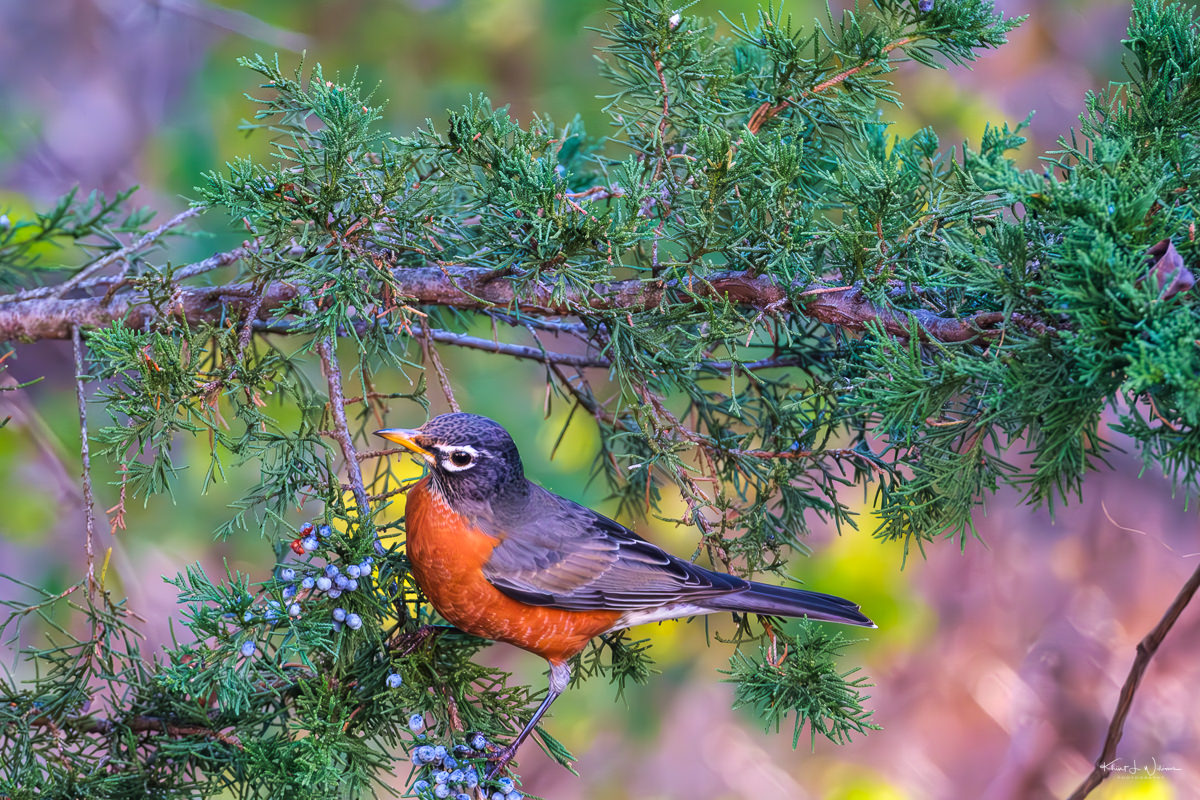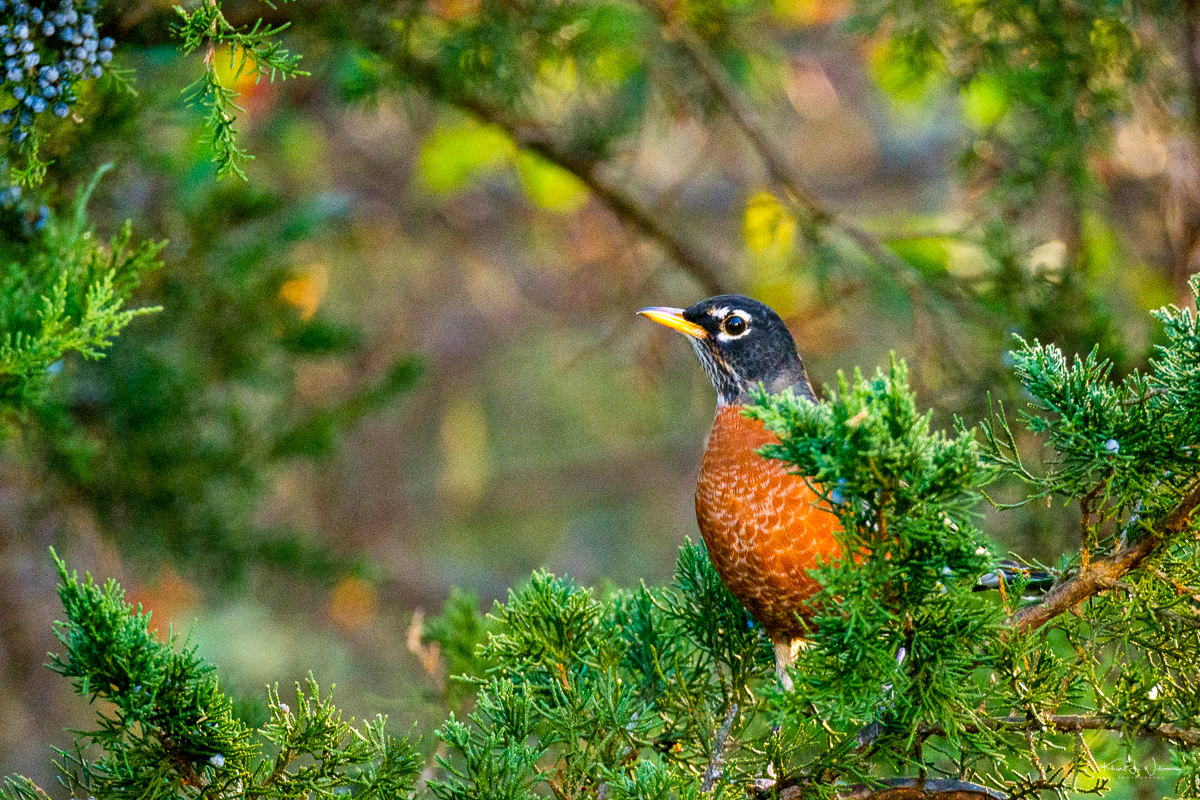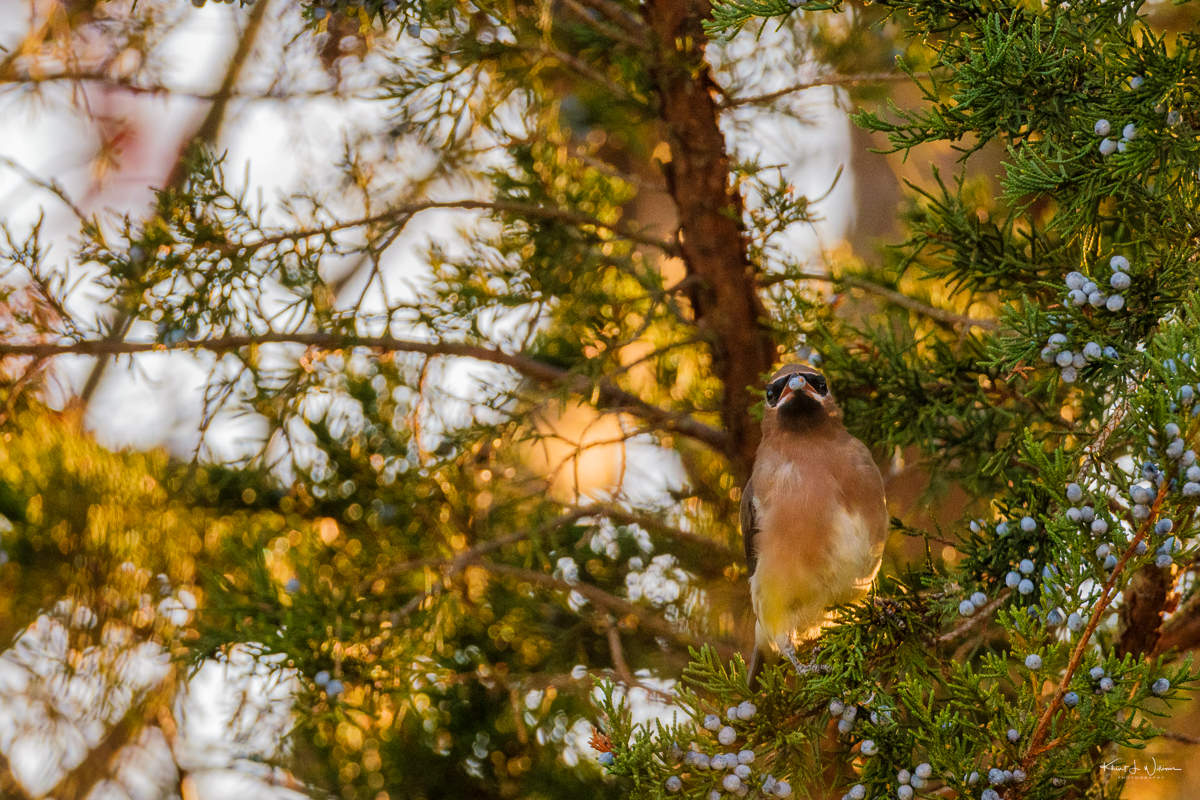As Spring sweeps in New Jersey, my enthusiasm for photography rises. I especially enjoy photographing tropical migratory birds like Warblers. These vibrant coloured tourists travel from Costa Rica and the Caribbean to the woodlands of New Jersey, offering a photographic buffet.
In my quest to photograph these elusive tropical birds, I've often overlooked the more quotidian birds that are easier to find in New Jersey. This happens due to familiarity, where I become so accustomed to seeing or experiencing something that I no longer actively notice it. It's a common psychological phenomenon associated with the concept of 'inattentional blindness', where our focus on distinctive aspects of our environment leads us to overlook others, even if they are obvious or familiar. This tendency to overlook the familiar is a common human challenge, as it can lead to missing out on the beauty and importance of everyday experiences or subjects.
The juniper trees in my backyard, predating the construction of our home 20 years ago, only grabbed my attention recently. One morning, the energetic chirping of birds drew my eye to the branches. I could see many birds hopping between the branches and flying between the Juniper and the woodland beyond the fence line. Peeking through my XF150-600mmF5.6-8 R LM OIS WR telephoto lens, I was captivated, seeing various types of birds feasting on the berries.
That morning, I observed not only the American Robin but also Bluebirds, Juncos, and Sparrows. However, the American Robin stood out with its round body, long legs, and striking orange chest. There were far more of them than any other type of bird. Their melodic song filled the early morning in our backyard, providing a delightful soundtrack to my birdwatching.
The adaptability of the American Robin is impressive. They flourish even in suburban settings like Montgomery Township. They often nest along the roof near the bends in our home's water drains.
With their regular diet of earthworms and insects dwindling, the American Robin shifts to fruits and berries during the late Autumn and Winter months. Juniper berries and other backyard offerings like holly and dogwood are essential to their diet. These become critical for their survival and energy, particularly those gearing up for their migratory travels.
In this shift of seasons, there's a lesson in adaptability and resilience from these winged beauties.






